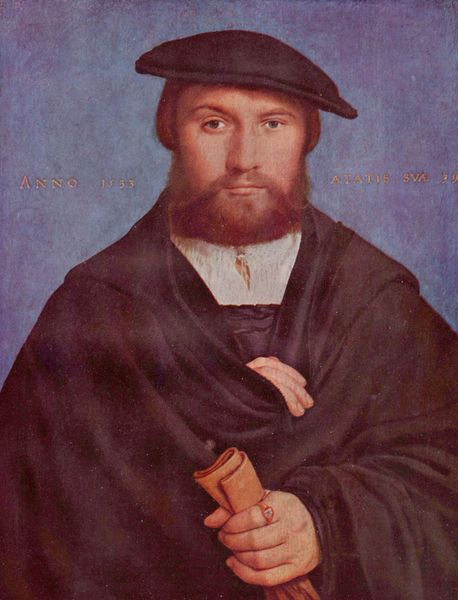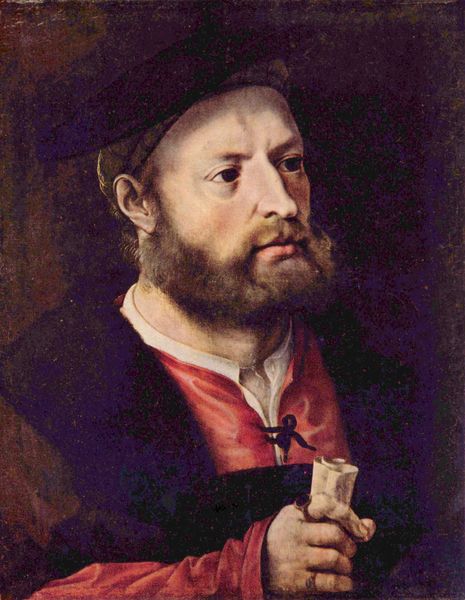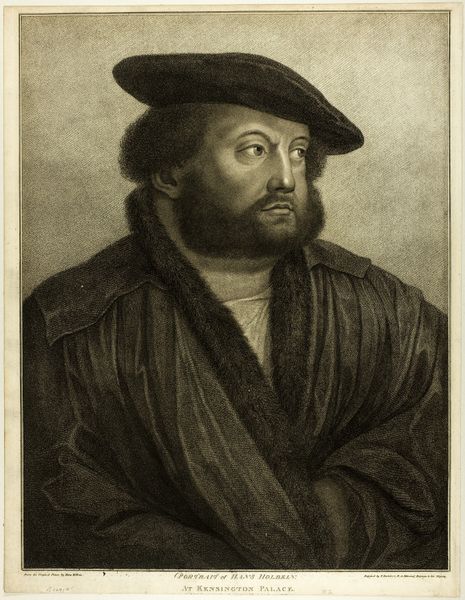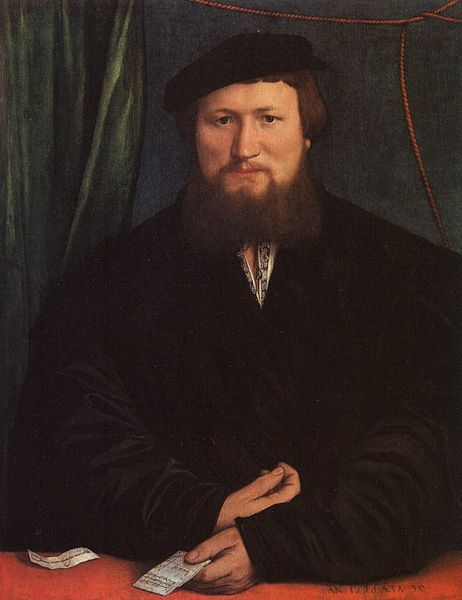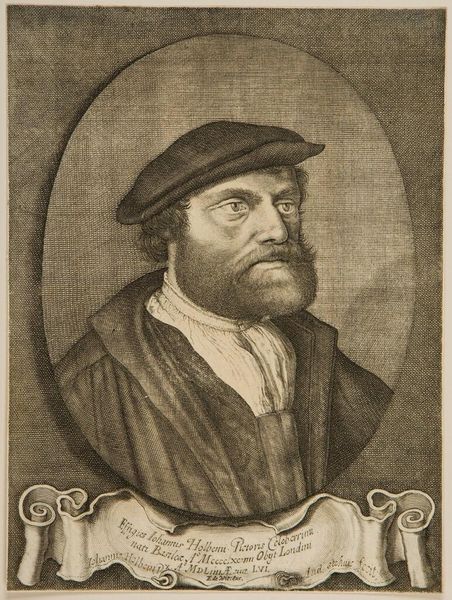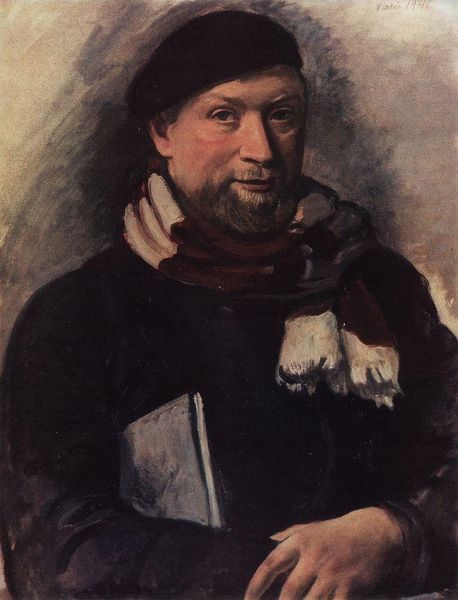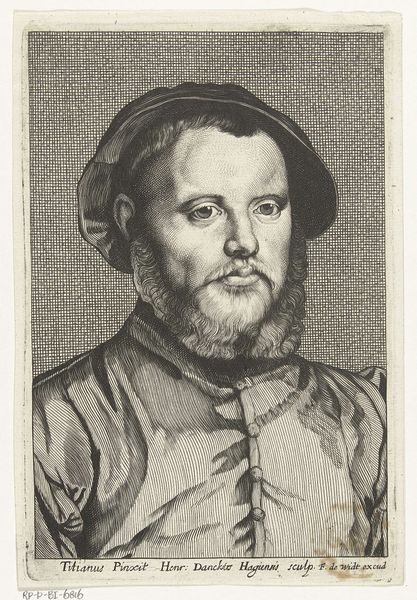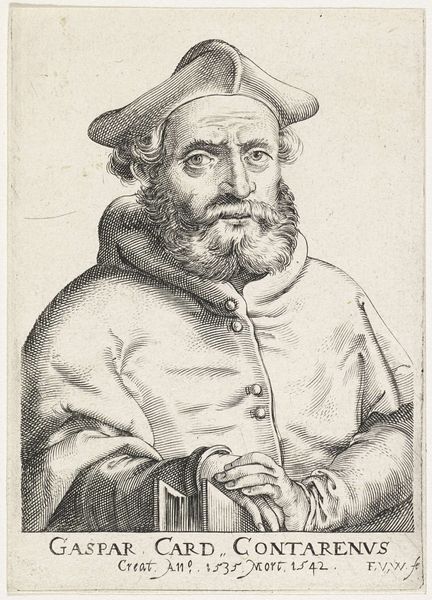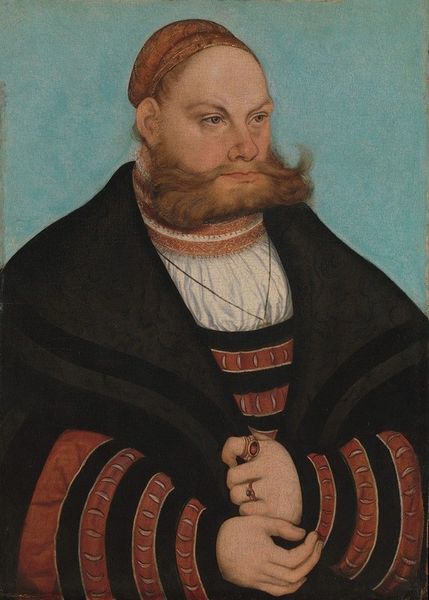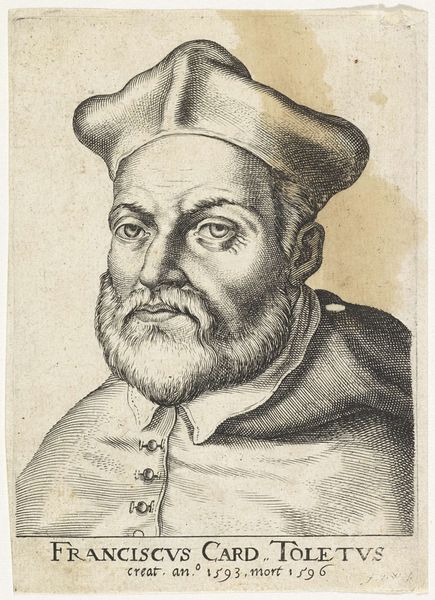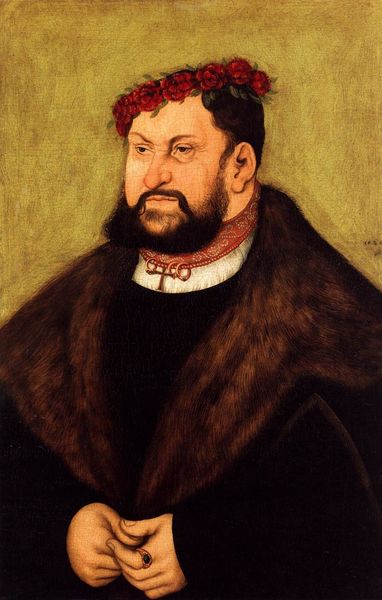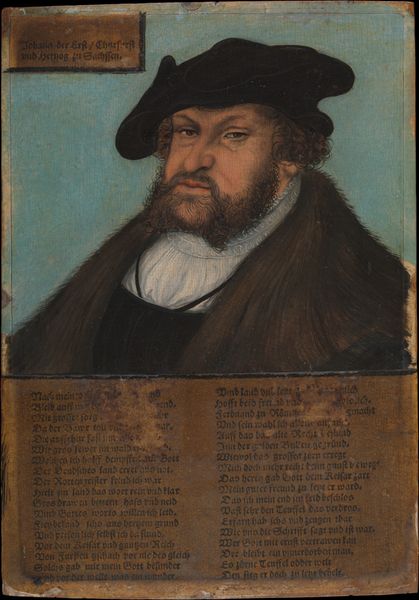
tempera, oil-paint
#
portrait
#
self-portrait
#
tempera
#
oil-paint
#
history-painting
#
northern-renaissance
#
academic-art
#
italian-renaissance
#
realism
Dimensions: 23 x 18 cm
Copyright: Public domain
Editor: Here we have Hans Holbein the Younger's "Self Portrait" from 1542, crafted with oil and tempera. It's a strikingly direct gaze; what aspects stand out to you? Curator: I’m drawn to how Holbein positions himself, and more broadly, how the self-portrait genre evolved as a statement of artistic and social standing. How does he choose to present himself? The somber attire and focused expression aren't just about capturing likeness, are they? Editor: Definitely not. He seems to be presenting himself as a serious professional, someone to be taken seriously. Do you think the artistic circles of the time affected his decision of how to be seen? Curator: Absolutely. During the Renaissance, artistic skill was moving from craft to a form of intellectual pursuit, positioning the artist as someone with a sharp and creative mind. Think about court artists and their elevated status, often entwined with the political and economic powers. This portrait is Holbein self-consciously engaging in this dialogue through a very public image. Editor: So this wasn't just personal expression, but professional branding? Curator: Precisely! It was strategic image-making. And look at the meticulous detail – reflecting the precision of the Northern Renaissance style that was influential. He is showing off skills while solidifying his public persona. Who does he want to be in the artistic sphere and what is the political message about the social role of art? Editor: That makes you see this in a completely new way, almost as if it’s a resume! Curator: It’s a calculated representation with cultural and political intention. Something artists still do today! Editor: Fascinating. Now I understand more about the artist’s mindset within his time. Curator: It all ties back to how artists function in—and react to—their societies, doesn't it?
Comments
No comments
Be the first to comment and join the conversation on the ultimate creative platform.
